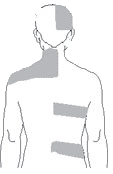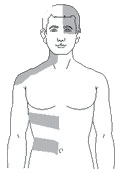
varicella zoster virus infecction



About 1 out of every 3 people in the United States will develop shingles, also known as herpes zoster, in their lifetime. An estimated 1 million people get shingles each year in this country. If you’ve ever had chickenpox, you can get shingles. Even children can get shingles. Your risk of shingles increases as you get older.
n their lifetime. An estimated 1 million people get shingles each year in this country. If you’ve ever had chickenpox, you can get shingles. Even children can get shingles. Your risk of shingles increases as you get older.
Signs & Symptoms


Shingles is a painful rash that develops on one side of the face or body. The rash consists of blisters that typically scab over in 7 to 10 days and fully clears up within 2 to 4 weeks.
Before the rash appears, people often have pain, itching, or tingling in the area where it will develop. This may happen several days before the rash appears.
Most commonly, the rash occurs in a single stripe around either the left or the right side of the body. In other cases, the rash occurs on one side of the face. Shingles on the face can affect the eye and cause vision loss. In rare cases (usually in people with weakened immune systems), the rash may be more widespread on the body and look similar to a chickenpox rash.
Other symptoms of shingles can include
- Fever
- Headache
- Chills
- Upset stomach
-
Transmission

Anyone who has had chickenpox in the past can develop shingles; even children can get shingles. Shingles cannot be passed from one person to another.
The virus that causes shingles, varicella zoster virus (VZV) can spread from a person with active shingles and cause chickenpox in someone who had never had chickenpox or received chickenpox vaccine.
VZV spreads through direct contact with fluid from the rash blisters.
Most people who develop shingles have only one episode during their lifetime. However, you can get the disease more than once.
A person with active shingles can spread the virus when the rash is in the blister-phase. You are not infectious before the blisters appear. Once the rash crusts, you are no longer infectious.
VZV from a person with shingles is less contagious than the virus from someone with chickenpox. The risk of spreading the virus is low if you cover the shingles rash.